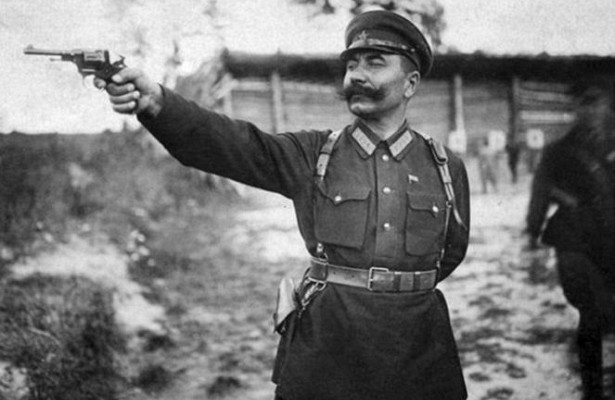
History 28/02/20 5 best generals of the red Army in the Civil war
Selecting the best is always a subjective element and can be challenged. But rarely what even the best General in history, have avoided the failures. And the success of captain is not always only victory and career. The rank of Marshal in the red army just did not give.
Mikhail Frunze
Of those we describe here, he is the one who came to military posts not from the Royal army and of the revolutionary struggle, from the Royal prison. Organizational skills Frunze clearly revealed in the post of military chief. On 31 January 1919 he was appointed commander of 4 th army operating against Kolchak’s troops in the Western steppes of Kazakhstan. In may 1919, Frunze combined command of the southern group of the Eastern front, and under his leadership the army of Kolchak advancing on Samara, was defeated. This moment marked the turning point of the war with Kolchak. Troops under the leadership of Frunze has cleared the enemy from the South Urals.
In July, 1919, Frunze was the commander of the Eastern front, and in August led the Turkestan front. Here he has conducted a series of operations, during which not only restored the relationship of Soviet Russia with Turkestan Soviet Republic, but also completed the conquest of Central Asia, finishing in September 1920, the Autonomous Emirate of Bukhara, and proclaimed it a Soviet Republic. In the autumn of the same year under the leadership of Frunze was finally defeated army of Wrangel in the Crimea.
Frunze did not know defeats as captain. A civilian man, he not only mastered the practice of war, but also became a prominent Soviet military theorist.
Mikhail Nikolayevich Tukhachevsky
Tukhachevsky as commander of the front has suffered a series of major defeats from the poles in August-September, 1920, However, he became one of the most successful generals of the civil war. Lieutenant of the nobles, for half a year earned five nagrad for bravery in 1915, badly wounded, fell into German captivity, where the fifth attempt he managed to escape. In June 1918, was appointed commander of the 1st army of the Eastern front.
Tukhachevsky has repeatedly suffered defeat from the white, and he could win. He had a good relationship with Trotsky, who always saw Tukhachevsky its reliable support in the army. In September 1918, Tukhachevsky led the successful operation to capture of Simbirsk – Lenin’s home town. Best of all proved Tukhachevsky, commanding in the summer of 1919 5th army on the Eastern front. Under his leadership, the Reds held Zlatoust and Chelyabinsk operations and overcame the Ural mountains.
Tukhachevsky skillfully massaged forces in the direction of the main attack, seeing it as the key to victory. In February and March 1920 in the rank of commander of the Caucasian front completed the rout of the troops of Denikin in the North Caucasus, and then commanded the Western front against the poles, where the first won a decisive victory in Belarus, but was defeated near Warsaw.
In 1921 he led the suppression of the Kronstadt uprising of sailors and the Tambov uprising of the peasants, personally gave the orders to use chemical weapons, the burning of villages and the shooting of hostages. According to the testimony of one who knew him, “he was not violent – he just had no pity.”
Semyon Budyonny
Famous command of the famous First cavalry army and also did not avoid serious failures. During the First world war Sergeant Budyonny became full George knight. Successively commanded a regiment, brigade and division of the red cavalry on the don front. In the summer of 1919, the division of Budyonny was deployed to the corps, whose commander he became. In October 1919, when he was threatening to the Soviet Republic, the situation on the southern front, the corps of Budenny has played an important role in the defeat of the white Cossack troops Mamontov and Shkuro near Voronezh.
In November 1919, the corps of Budenny was transformed into 1th cavalry army, which became the main striking force of the red army in the war of maneuver. Army won important victories over the white, in January of 1920 broke into Rostov, but was soon defeated by the white cavalry generals Toporkov and Pavlova. Another defeat Budyonny was defeated in February in Egorlykskaya battle. However, they did not prevent the defeat of the troops of Denikin in the North Caucasus, and around Budenny already had the aura of legend. Do not leave it and once in August of 1920 the First Horse suffered from Zamosc severe defeat from the poles, were surrounded and miraculously he escaped.
Vasily Blyukher
Starting on mobilization in August 1914, serving as a private and promoted to Junior non-commissioned officer, namesake of the famous Prussian field-Marshal was in 1916 the reserve after the injury and, working in a factory, joined the Bolshevik party. This man was an asset to the red army. Even in the winter 1917/18, he participated in the suppression of the rebellion of the Cossack ataman Dutov in the southern Urals. In the summer of 1918, with the intensification of the civil war, Blucher was in the rear of the enemy.
Thank Blucher brought a thousand-mile March RAID of his guerrilla unit on the white rear in the Urals in August-September 1918. During this campaign blücher first, the red army received the order of the red banner. His military talent was revealed in the post of head of the 51st infantry division, the head of which he fought against Kolchak, having risen from Tyumen to lake Baikal. This part of Blucher commanded and during the liquidation of Wrangel’s troops in the Crimea. 51st division took Perekop, moving part of his forces through the siwash, and ensured the success of the operation.
However, Blucher got the unenviable assignment to a distant suburb in June, 1921, he became war Minister of the buffer far Eastern Republic. Having successfully held in February 1922, the legendary Volochaevskaya the operation, he was recalled to Moscow.
Vasily Shorin
Colonel of the tsarist army little known, probably because shortly after the civilhell of the war left the ranks of the red army at the age. This, however, did not save him in 1938 from execution. After the October revolution, when the Bolsheviks experimented with the election of commanders was one of those officers whom the soldiers had elected their commander. In September 1918, was appointed commander of the 2nd army on the Eastern front after it was completely disorganized Izhevsk-Votkinsk uprising in the rear, and for a short time brought her in fighting shape.
Poorly directed the actions of the army during the winter offensive of Kolchak in Perm, but in the spring of 1919, at the post of commander of the Northern group of troops of the Eastern front, carried out a successful offensive operation near Perm and Yekaterinburg, which ended with the defeat of the main forces of Kolchak and occupation of the Urals. In 1921 he led the suppression of the peasant uprisings in West Siberia.
the Crowning achievement of his military career was the command of the Turkestan front in 1922. Under his leadership in the summer of that year was defeated by the main forces of the Basmachi in Eastern Bukhara (Tajikistan). In the course of their was destroyed by the leader of the Basmachi gangs, ex-military Minister of Ottoman Turkey, Enver Pasha.
Yaroslav Butakov
Source:
© Russian Seven
Featured articles Share: Comments Comments on the article “top 5 generals of the red Army in the Civil war” Please log in to leave a comment! br>
Share on Tumblr
















